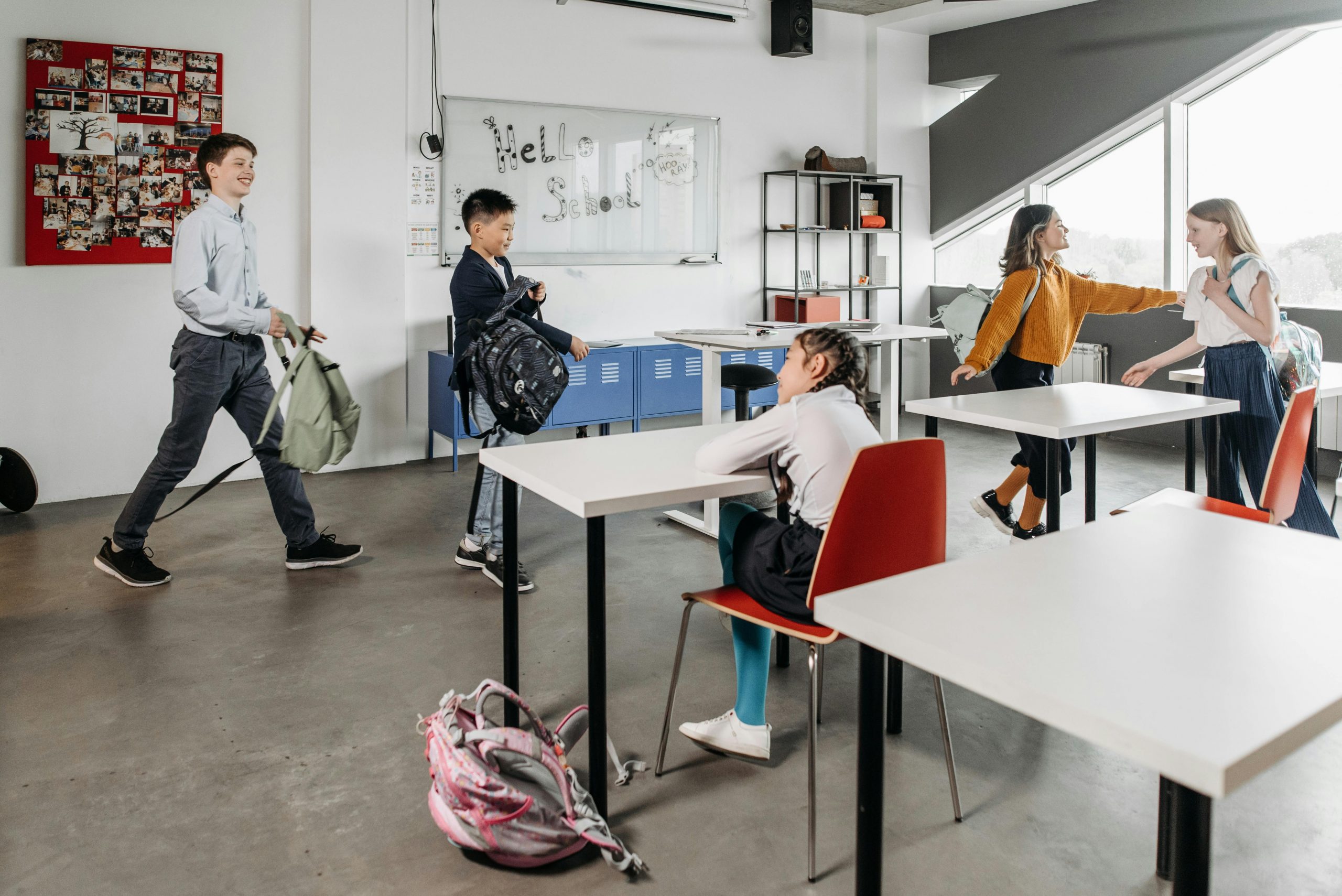A new year and new start. The first week of school brings so many opportunities and in the midst of planning fun icebreakers and getting-to-know-you games, this is also your golden opportunity to set up the expectations, routines, and systems that will shape your classroom all year long. Students thrive when they know what to expect, and teachers thrive when things run smoothly. That’s why routines, procedures, and clear strategies are essential from Day 1.
Think of it this way: every routine you teach now is one less thing you’ll have to explain, re-do, or troubleshoot later. If you take the time to model, practice, and reflect with your students in that first week, you’re investing in a smoother, calmer, and more efficient year ahead.
Although there are countless routines, procedures and strategies you could implement in your classroom, I want to share with you my top 11 routines, procedures, and strategies that I always introduce the first week of school that help everything run like a well-oiled machine. These are the routines, procedure and strategies that I have tried, modified and perfected to help my year go more smoothly and I hope they will do the same for you. They focus on:
- Starting the Day with Intention and Ownership
- Managing Transitions & Movement Throughout the Day
- Routines that Support Learning Time
- Ending the Day with Responsibility and Reflection
Starting the Day with Intention and Ownership
Mornings set the tone. That first 20 minutes of your day can either feel rushed and chaotic—or calm, focused, and intentional. I build ownership and consistency into my mornings by teaching these routines right away:
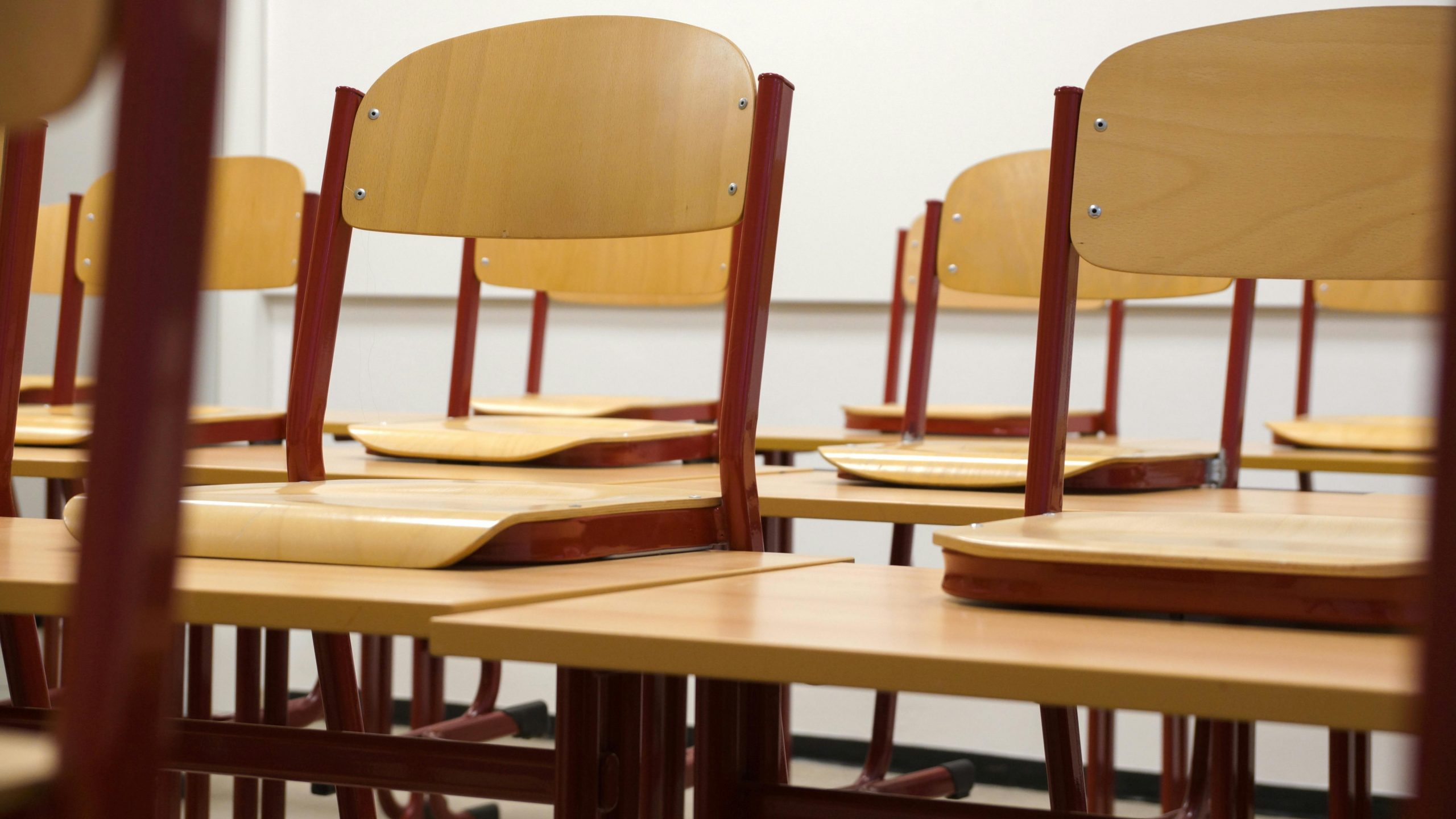
First Week of School Routine: Setting Up the Classroom in the Morning
There’s nothing worse than starting your day answering 15 questions at once while trying to open your laptop, unstick your eyelids, and find your coffee. That’s why I swear by this morning setup routine—it saves my sanity, builds student independence, and sets a calm, purposeful tone for the whole day.
This routine is all about helping students ease into the classroom mindset—not by launching into a pop quiz, but by giving them space to settle, chat with a friend, and take ownership of the space. Here’s what it looks like in my classroom:
- Put away backpacks.
- Check the schedule and any morning instructions.
- Set up the classroom.
Pro tip: The schedule. Post it. Every. Single. Day. And include the times—even for the littles. Think about how time is displayed in your classroom. If you’ve got an analog clock up, try posting the schedule in digital format. It’s a sneaky (and super effective) way to build time-telling skills naturally. For younger students, it’s great exposure. Even if they can’t read the clock yet, they’re starting to make connections.
And let’s be real—the benefits aren’t just for the students. While they’re busy setting up and checking the plan for the day, you can use those precious few minutes to respond to emails, pull materials for the first lesson, or check in with the student who had a rough morning. That calm, quiet hum of students getting the classroom ready? It’s music to a teacher’s ears.
First Week of School System: Buddy System for New Students
Welcoming new students can set the tone for how they feel about school—and nothing creates a sense of belonging faster than peer connection. That’s why I have a buddy system in place for any new student who joins our class.
I pair them with a returning student who acts as their guide for the first week. It’s always an honor to be chosen as a buddy, and I make that clear. We go over expectations together: showing the new student around, including them during group work, lunch, and breaks, and checking in on how they’re doing. I also check in regularly with both the buddy and the new student throughout the week to offer support and encouragement.
This simple system builds empathy and leadership skills in returning students while giving new students a soft landing. I also send a “settling in” report to parents and try to connect in person or by email during the first week. It’s a small gesture that makes a big impact—and it turns the start of a new chapter into a shared classroom responsibility.

First Week of School Procedure → Routine: Flexible Seating Options
Flexible seating is one of those magical things that sounds amazing in theory—until you’re trying to teach while a kid is hanging upside down in a bean bag and another is rolling across the floor like a tumbleweed. But done right? It’s gold.
When I first introduced flexible seating, I quickly learned that choice doesn’t mean chaos—it means structure with a side of ownership. The goal is to let students work where they feel most focused and comfortable, while still maintaining clear expectations that keep learning on track.
Here’s how I make it work:
- Students always start in their seats for instructions. This is non-negotiable. Everyone has a designated chair for the beginning of a lesson. No wandering, no bouncing, no bean-bag nesting while I’m giving directions.
- Once I’ve shared what we’re doing and what success looks like, then they can choose where they want to work. This might be at a desk, standing at the back counter, sprawled on the floor with a clipboard, snuggled into a bean bag, or perched on a wobble stool.
- The key phrase in my room? “Make a choice that helps you learn.” We talk (and reflect!) a lot about how to know if your space is working for you—and how to notice when it’s not.
First Week of School Routine: 5 Minutes of Freedom
You know that chaotic energy students bring back with them after recess or specials? Like they just stepped out of a tornado and landed in your classroom? Instead of fighting it, I decided to build it into our day—on purpose.
Enter: 5 Minutes of Freedom.
What is 5 Minutes of Freedom?
After every major transition—whether it’s the start of the day, coming in from recess, or returning from specials—my students get a dedicated five-minute window to settle in. This isn’t just free-for-all time (though it feels that way to them). It’s built-in breathing space to practice self-regulation and time management.
How Does It Work?
- Students are encouraged to use the bathroom, grab a drink, chat with a friend, read, doodle, finish work from earlier, or just zone out for a minute (honestly, I get it).
- The only rule? By the end of those five minutes, they need to be in their seat, materials ready, and their brain in “let’s do this” mode.
At the end of the 5 minutes, I close the classroom door and anyone still not back in the classroom sits on the benches outside the classroom. Students have to sit outside while I start the lesson, by giving basic instructions. It is important that students feel what it’s like to be late but it’s important for me not to shame them. So after 2-3 minutes I just:
- Open the door
- Remind them that they need to be on time
- Welcome them to join the class.
Students know that they are to come in, look at the board to see what subject we are doing and to ask their classmates what they missed. It is important for me that they learn not to interrupt lessons when they are late.
What It Teaches…
What they don’t realize is they’re learning some seriously grown-up skills:
- Prioritizing what they need in that moment (Do I finish my paragraph? Or finally go pee?)
- Time management (Five minutes goes fast, y’all)
- And self-awareness about how they transition best.
- Etiquette for coming in late
And bonus—for you, the teacher? It gives you those crucial minutes to reset yourself, respond to an email, talk with students about an issue on the playground, pull materials, or (if you’re lucky) just sip that one gloriously uninterrupted sip of coffee.
This little slice of autonomy sets the tone for the rest of the day. And honestly, it’s one of the routines I’ll never go without again.”
Managing Transitions & Movement Throughout the Day
Transitions are one of the biggest time-wasters if you don’t teach them well. Clear routines around movement keep the energy up without losing control.
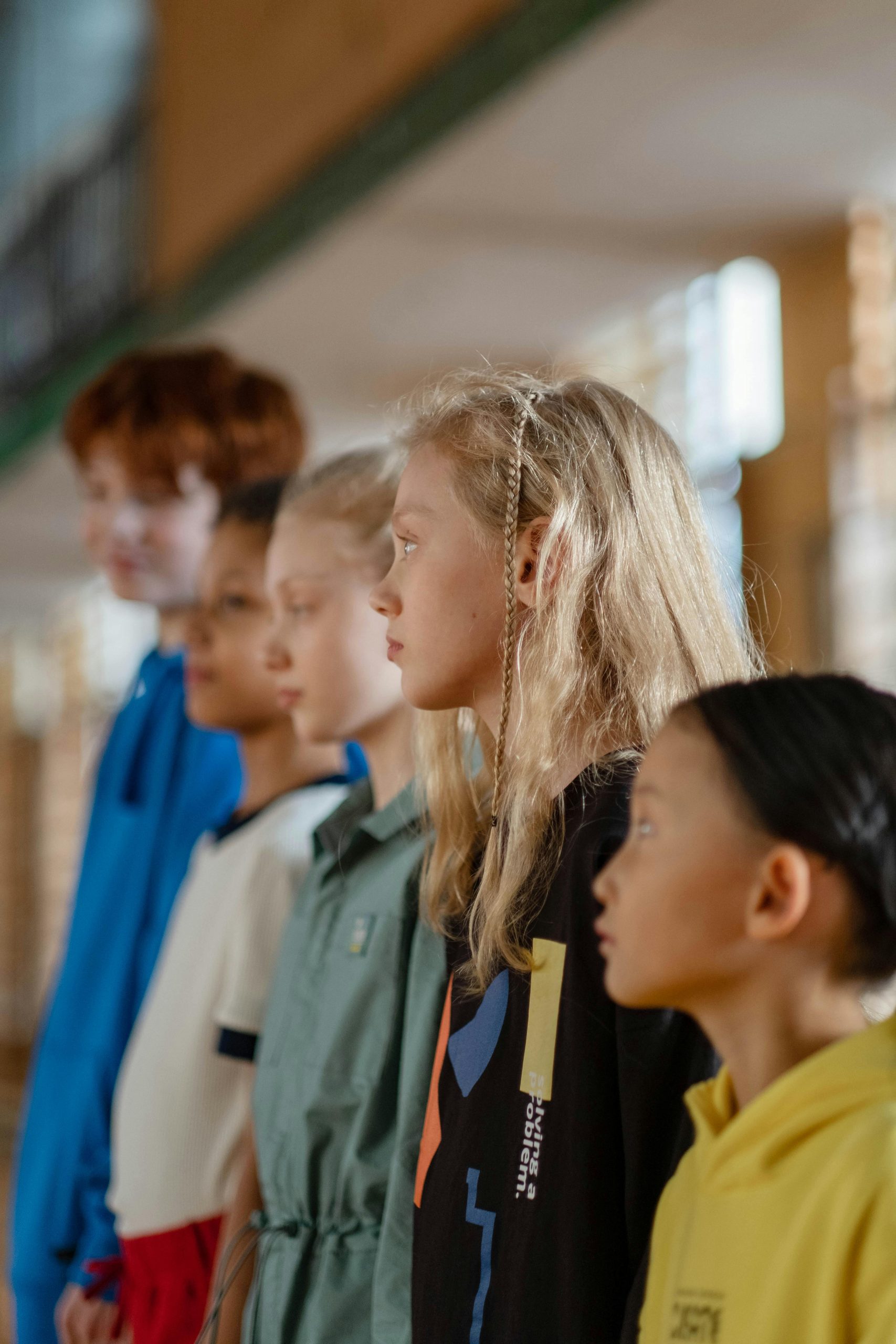
First Week of School Routine: Lining Up and Walking in the Hallway
Lining up and walking silently isn’t easy after a summer of freedom—but it’s worth practicing until it feels natural.
I tell students the goal is simple: move calmly and respectfully so we can transition smoothly and be on time. I explain that last year’s class had to practice seven times before they made it to the library. This challenge always motivates them. We talk about how walking quietly helps us hear directions and shows respect to other classes still learning. If someone talks, we go back and try again—no shame, just practice. We brainstorm quiet reminders, like a finger to the lips, and celebrate every bit of progress. As they improve, I step back—watching from a distance, then eventually sending them off. Some students need extra support like a gentle hand on the shoulder and additional chances before having to try again and that is absolutely okay. The key is patience, consistency, and giving them time to truly master independent, respectful movement.
First Week of School Routine: Using the Restroom
We all know that moment when a hand goes up in the middle of instructions and we stop to answer the question just for the student to ask if they can go to the restroom. To keep lessons flowing without constant interruptions, I teach students to use the American Sign Language sign for “toilet” when they need to go. This simple, silent signal lets me know, and I respond with a nod. No hand-raising, no stopping the whole class. When I introduce this routine, I make it clear: I’ll always let them go if it’s urgent. But if we’re in the middle of important directions, I might ask older students if they are able to wait until I quickly finish explaining. This routine teaches students to manage their own needs respectfully and helps me avoid breaking the flow of teaching.
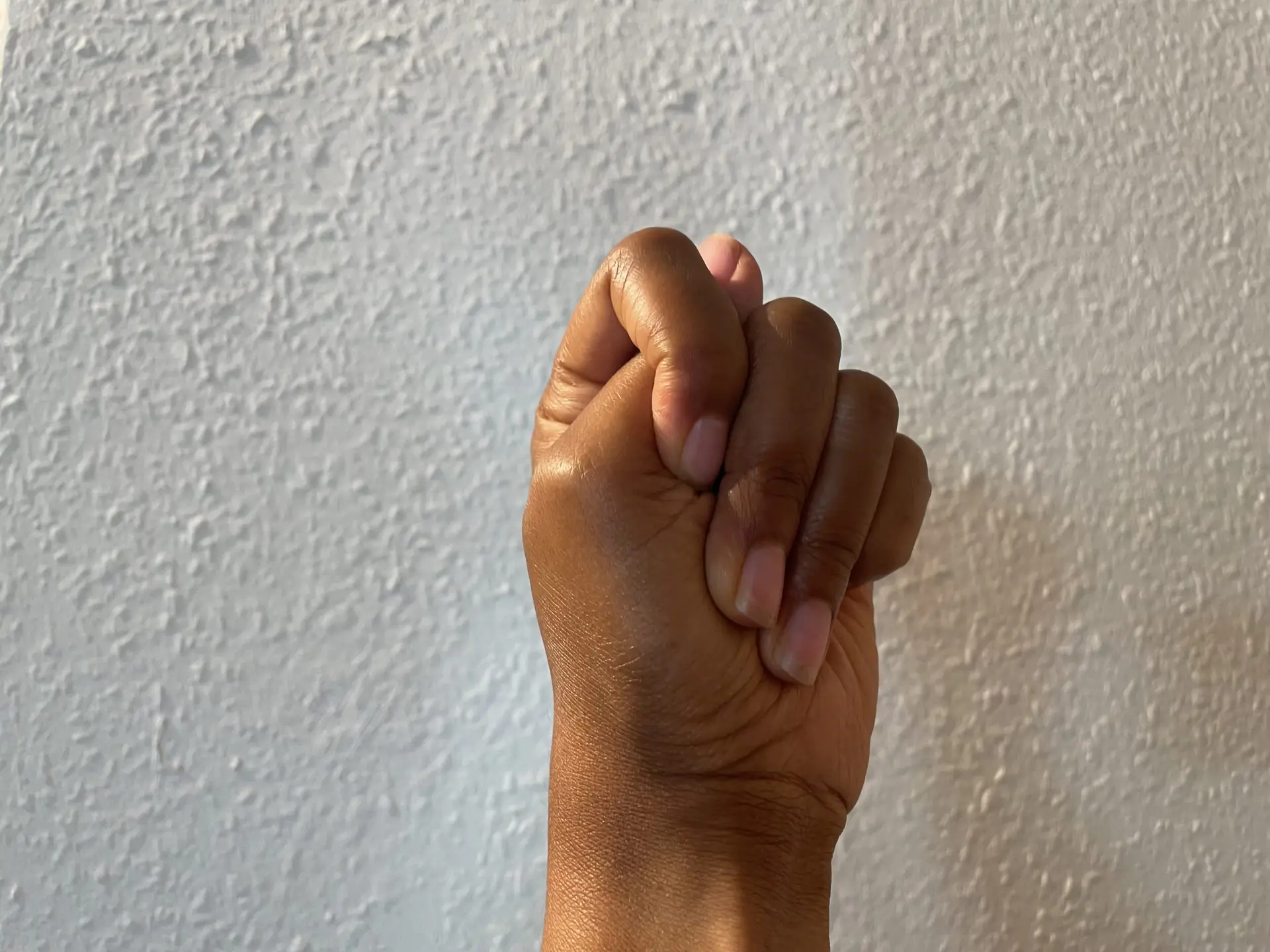
This routine works great in combination with the 5 Minutes of Freedom. The first weeks of school, I am consistently reminding students to go to the restroom during their 5 minutes. The more they get used to going to the restroom before the lesson starts, the less they will need to go during lessons…and especially during instructions in the beginning of the lesson.
First Week of School Procedure → Routine: Setting Up and Taking Out Resources
There’s a big difference between telling students to “get what they need” and teaching them how to do that in a calm, organized, productive way.
This routine is all about empowering students to be self-sufficient—without turning your classroom into a war zone.
- I make sure my classroom is organized in a way that is clearly labeled and makes sense – e.g. all the math supplies in one area, all the art supplies in another and so on.
- I take time to allow students to explore where everything lives: math bins, reading folders, headphones, you name it.
- We practice how to take materials out, carry them, and put them away properly—Every. Single. Time. I like to give them time to just play with all the resources, where some of the main focus is taking them out and putting them back. I get out a timer and make it into a team challenge. The kids love this.
- I assign students to get resources. This looks different each year for me depending on the kids and the age group. Sometimes I assign table jobs or resource managers for added structure. Nothing fancy—just little routines that keep the chaos in check.
Eventually, it becomes second nature. No more scavenger hunts for glue sticks or pencils in the middle of a lesson. And even better? You get back valuable instructional minutes that would’ve been lost to mess and confusion.
Supporting Learning Time
Focus on fostering productivity, independence, and small-group instruction time.
First Week of School Strategy: Numbering Students
Numbering students is a small step that makes a huge difference. I assign numbers based on last names in alphabetical order—it’s a simple system that streamlines everything from grading to lining up on field trips. It’s especially helpful in international schools, where students often come and go. I use numbers when organizing assignments, labeling folders, or calling students without using names. On field trips, we use numbers to count off after getting off public transport. This quick routine saves time, reduces stress, and creates an easy reference for anything that needs alphabetical order—even if the roster changes during the year.
First Week of School Routine: Doing Stations
I start most days with language stations—it sets a productive tone and gives me space to work with individuals or small groups. Students get out materials on their own and know exactly what to expect. This routine not only builds independence, but gives me time to reset and get ready for the day. Even though I do language stations, you can choose any stations that fit your style, focus or students’ needs. As a classroom teacher, I like doing language stations because literacy has a lot of important skills that need routine practice.
First Week of School Strategy: Counting Up Time with a Timer
Instead of stressing students out with a countdown, I count up. For example, I’ll tell them they have 30 minutes, then start a timer that tracks how long they’ve been working. Around the halfway point, I ask them to reflect: “What have you accomplished so far? What’s next?” This shifts the focus from panic (“I only have 10 minutes left!”) to progress and pacing. It’s a great way to build time awareness without the pressure.

Ending with Responsibility and Reflection
These procedures encourage accountability and help students wrap up their day with calm, purpose, and ownership.
First Week of School Procedure: Friday Folder
Friday Folders are a simple but powerful tool for building student accountability—without assigning homework. At the end of the week, any classwork that should have been finished but wasn’t sent home to be completed over the weekend and returned Monday. I use sturdy plastic envelopes and a checklist where students write down what needs to be done. This helps them reflect, keeps parents informed, and gives students a clear plan.
Students who don’t have any incomplete work turn their folders in right away—a proud moment we quietly celebrate. Others often notice they have less than last week, which builds a sense of progress. Since implementing this system, I’ve seen students use class time more effectively—especially their Five Minutes of Freedom.
It’s important to note: this isn’t for work students didn’t have enough time or support to complete. If most of the class isn’t done or if a student needs accommodations, that work stays at school. I also make it clear to families—this is unfinished classwork, not homework.
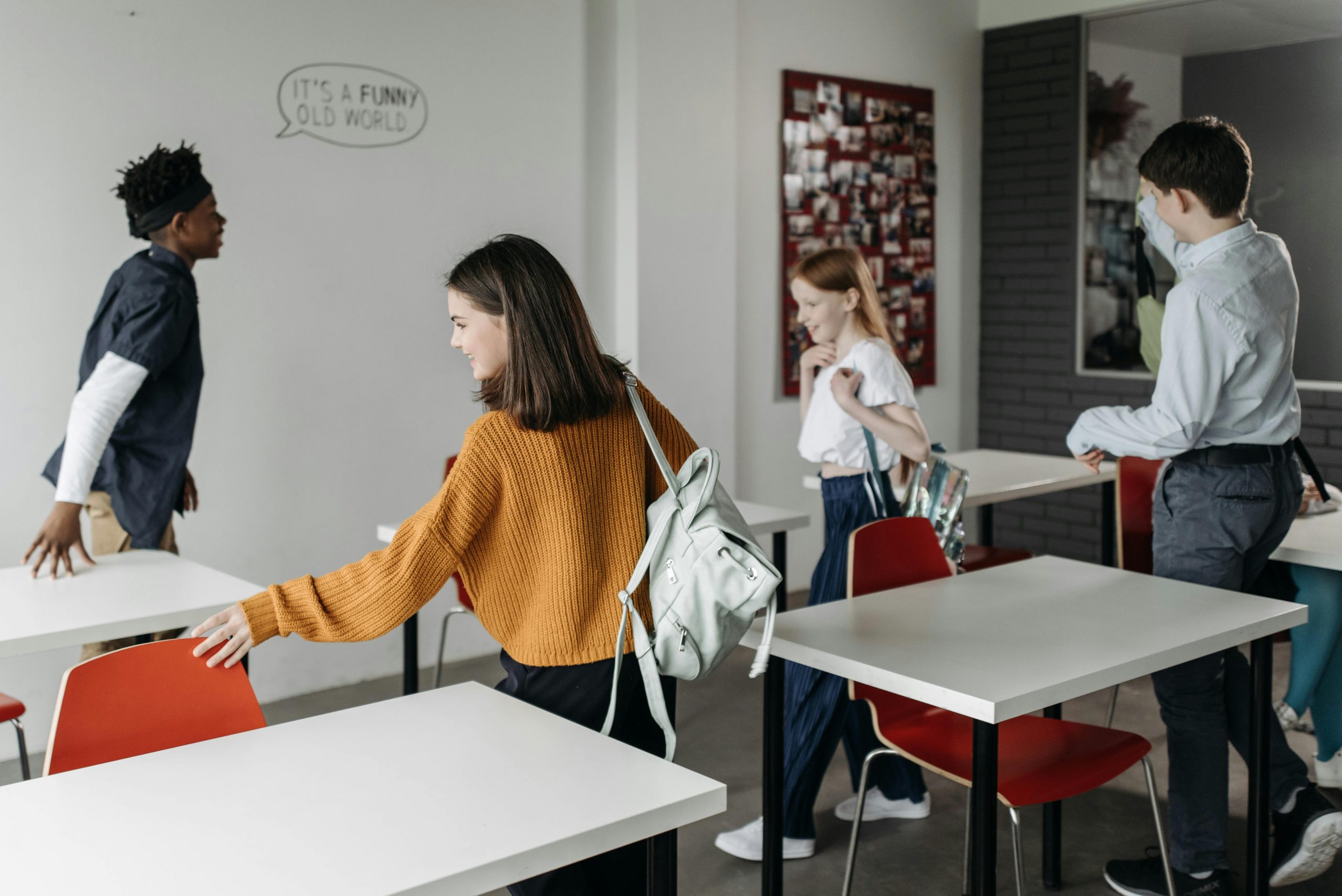
First Week of School Routine: Getting Ready for Home
The end of the day doesn’t have to feel like a whirlwind. A simple, consistent routine for packing up helps students take responsibility and keeps things running smoothly. While every classroom looks a little different, my advice is to avoid the last-minute traffic jam at the lockers or cubbies. Instead, have students bring everything to their desks or a designated area before they start packing up. This keeps pathways clear and gives you the chance to check in, help students double-check what they need, and end the day with a calmer energy.
Whether it’s the same few steps every day or a visual checklist on the board, the key is consistency. When students know exactly what to do, they’re more likely to do it independently—and you’re less likely to end your day with, “Where’s your backpack?” shouted across the room.
Building Consistency Starting the First Week of School
The key to all these routines, procedures, and strategies is consistency. You don’t just explain them once—you model them, practice them, and reflect on them with your students. When you invest the time in Week 1, you’ll see the payoff all year long.
Clear expectations create freedom. Students know how to succeed, and you get to spend more time teaching and connecting—instead of managing behavior or explaining directions for the tenth time.
You’re setting the stage not just for a smooth classroom, but for a space where real learning—and real-world skills—can thrive.
You’ve got this!

